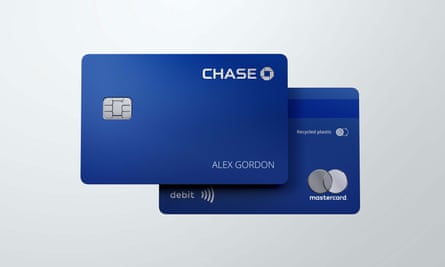First there was the contactless revolution; now credit and debit cards are going numberless.
Increasingly, banks are relegating information such as the 16-digit long number and the expiry date to the back of the card, while a few are going the whole hog and not printing them anywhere.
For decades, bank cards broadly looked the same: fairly utilitarian, with the account holder’s name, the long number and the “valid from” and “expires end” dates all usually on the front (plus, in the case of debit cards, the account number and sort code), and the three-digit card security code typically on the back.
However, it is now increasingly common to see a fairly simple and uncluttered front, or maybe an eye-catching image (such as a bright yellow beach hut), with the numbers and other personal information printed on the back.
In early 2020, a payment service called Curve announced it had launched “the first numberless cards in Europe”. These cards, made available to the company’s investors, had all the numbers removed.
Since then, in the UK, the digital bank Chase has made a feature of the fully numberless debit card that you get with its current account. It says this adds an extra layer of security for customers. But while the move has been welcomed by some customers, others have questioned how easy it is to pay for items online or by phone.
 View image in fullscreenChase’s numberless debit card. Photograph: Chase
View image in fullscreenChase’s numberless debit card. Photograph: Chase
Among the high street banks, there is certainly a trend. Barclaycard redesigned its credit cards earlier this year to remove numbers from the front, while NatWest started to roll out new-look debit cards – where “all the usual card info is now on the back” – in April.
Halifax, HSBC and First Direct are just a few of the others that have done the same.
Some will wonder whether moving the numbers to the back and the other design changes are all about aesthetics, as banks attempt to woo the “Instagram generation” by freshening up their products.
But there are other factors at play, some of which reflect the rapid rise of digital wallet services such as Apple Pay. First Direct says its redesign means your card will be easier to find if you are scrolling through a digital wallet.
Meanwhile, HSBC says it wanted the front card design “to be simple, clean and effective to benefit our customers with disabilities. By moving all the text to the back of the card, we were able to go bigger and bolder with the text without interrupting the front design of the card.” It adds that moving the numbers to the back “does come with a level of improved security” as it means your card details are less visible to people nearby.
 View image in fullscreenHSBC says moving the numbers to the back of cards ‘does come with a level of improved security’. Photograph: Facundo Arrizabalaga/EPA
View image in fullscreenHSBC says moving the numbers to the back of cards ‘does come with a level of improved security’. Photograph: Facundo Arrizabalaga/EPA
Chase, which launched in the UK last September, says a customer’s card details are stored behind a secure login on its app, so people are not putting their personal details at risk if they lose their physical card. It adds that should a customer ever need to replace their card details, they can instantly generate new ones in the app.
However, one customer tweeted that their numberless card was “annoying”, adding: “Each time I pay, I have to open the account and find the number instead of simply looking at a card and typing the number. Pretty pointless bit of security.”
The bank says your card details can be quickly accessed within the app by tapping the blue card at the top of the home screen, then tapping “see details”.
If you are returning or collecting something and are asked for a card number, it says you need to find the transaction in the app and scroll to “card ending with”. Most places should only need to see the last four digits, it adds.
A spokesperson says: “We hear consistently from customers that they view having a numberless card as an advantage in protecting against fraud and theft.”
One customer tweeted that moving to Chase was “the best thing I’ve ever done”, and that numberless cards meant that if there were any problems, “they just change the card number remotely, and no need to send one out unless you lose it. If you do lose it, there are no details on it for a scammer to use.”
Armen Najarian at Outseer, which specialises in anti-fraud solutions, says that even for providers such as Chase which have no numbers on their cards, “a card number does exist digitally, so vulnerabilities still exist”. He adds: “In the overwhelming majority of fraud cases, the fraudster never sees the card as these attacks tend to happen online … So, if a card number exists – physically or digitally – it’s up for grabs.”
If people come to believe it makes their details more secure, demand for such cards will growDavid Griffiths of Contis
Santander has launched numberless cards in locations such as Mexico but says it does not currently have any plans to introduce them in the UK.
Guardian Money spoke to one UK bank that said it had considered going down the numberless route but decided against it. “Removing all card details forces customers to obtain these digitally,” the bank said, adding that many people are not digitally active.
However, David Griffiths at the payment technology firm Contis says: “Not printing the card numbers on the back of the card is presently a bit of a novelty. But if people come to believe it makes their details more secure, demand for such cards will grow. Primarily, I think numberless cards look neat, and we are going to see more of them because they look neat.”


